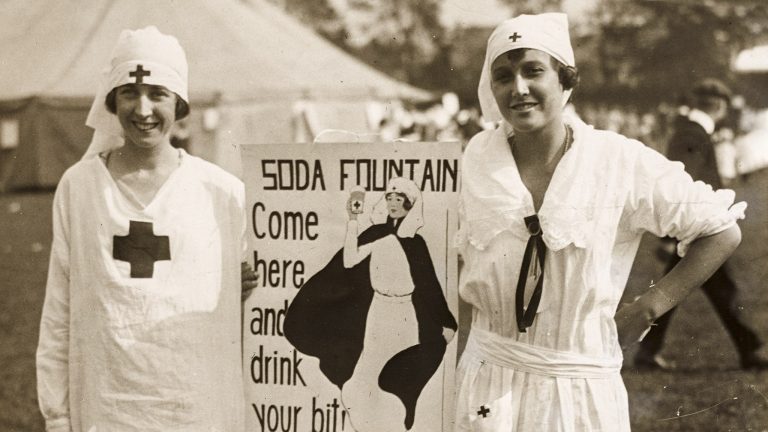By Julia Mohr, Staff Writer
No matter where you look, it is impossible to ignore the impact of COVID-19, even on Bryn Mawr’s insular campus. Students don masks everywhere barring their dorm rooms, classrooms remain empty or at a low capacity, traditions are cancelled or greatly modified—nothing has been left unscathed by this pandemic. While this year poses new experiences and challenges for students and faculty alike, it isn’t the first time Bryn Mawr has endured a pandemic.

In 1918, the world faced a situation similar to the one we are experiencing today. The Spanish Flu (also called the H1N1 virus) wreaked havoc throughout the world. Approximately 500 million people—over a quarter of the global population at the time—are estimated to have contracted it, resulting in at least 50 million deaths. By contrast, Bryn Mawr’s on-campus cases totaled 110 with no deaths. This is particularly significant considering the Spanish Flu’s unusually high mortality rate among healthy adults.
This virus first spread to Bryn Mawr’s campus in September 1918. Fearing an outbreak, President Thomas sequestered “patient zero” in isolation and issued a strict campus quarantine. As an added measure, the College offered vaccines for $1, though this was ultimately futile as the vaccine targeted a different strain of the virus. By November, as the pandemic cooled, approximately 24% of the student body had contracted influenza.

The quarantine restrictions the students of 1918 faced mirror the contemporary COVID procedures Bryn Mawr has implemented today. It included modified traditions, limited off-campus access, and no visitors or large group meetings. However, back in 1918, students certainly didn’t have the advantage of technology, meaning that classes remained in-person. And while quarantine rules in 1918 didn’t include wearing masks, Bryn Mawr instituted a policy that discouraged students from spreading germs:

“I ought also to say that in order to check the sneezing and coughing which has been so disturbing in the classrooms we said that students must cough and sneeze into their handkerchiefs and we imposed a fine of $5 on those who did not. It has had the most magical effect as in chapel in the morning now I never hear a single cough.” President M. Carey Thomas wrote in a letter to Dr. Thomas F Branson on October 23, 1918.
Just like today, the students of 1918 worked to adapt their traditions to the limitations imposed on them. The Christian Association Reception, for instance, became an “Anti-Flu Party,” where a Bryn Mawr Newspaper article written in 1918 reports, “…the board and association presidents received from behind masks and extended a hearty yardstick with a warm handshake for all at the further end. They wore kilties, gowns and other strange costumes so that they would not be recognized by any chance germ… Since all big gatherings have been prohibited, this novel entertainment with games and races was devised to take the place of a formal evening party in the gymnasium.” While the traditions we experience this year won’t be the same, it is comforting to know that our situation is not entirely unique. Bryn Mawr is resilient.
A stark contrast between the two pandemics lies in the nature of the respective illnesses. The 1918 quarantine lasted only around two months, which, when compared to the seven months and counting of the 2020 restrictions, is certainly preferable. Though it is unclear how long COVID-19 will continue to impact our lives, Bryn Mawr and its community definitely looks forward to that “grand and glorious feeling” when the pandemic finally ends.
Pictured: Bryn Mawr students Margaret Hart and Maisie Rush. Image credit: BillyPenn, The College News.
